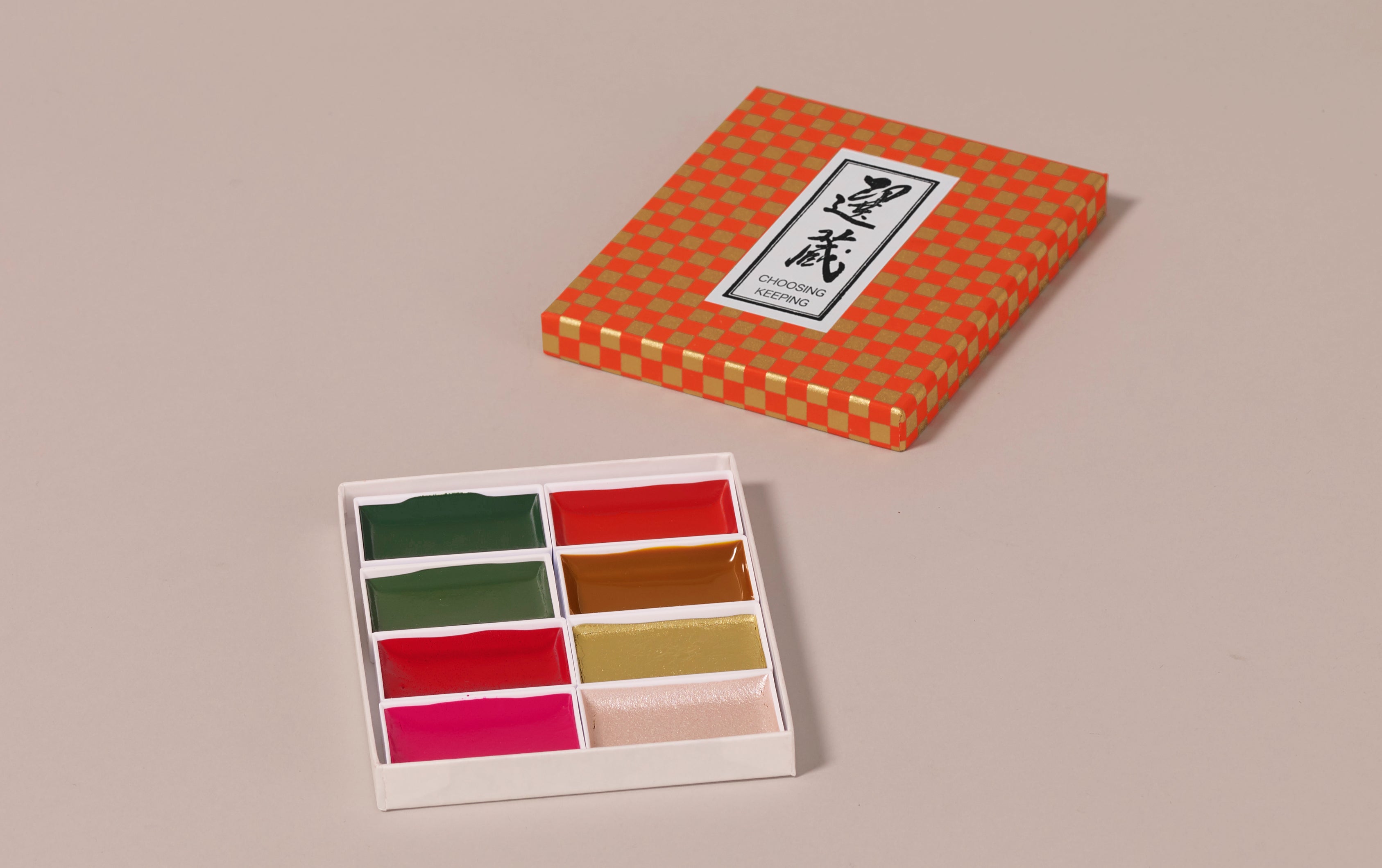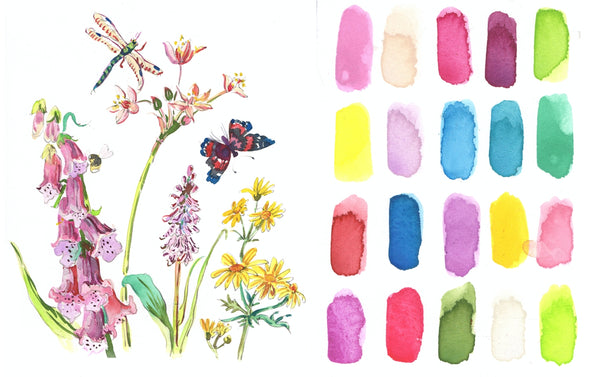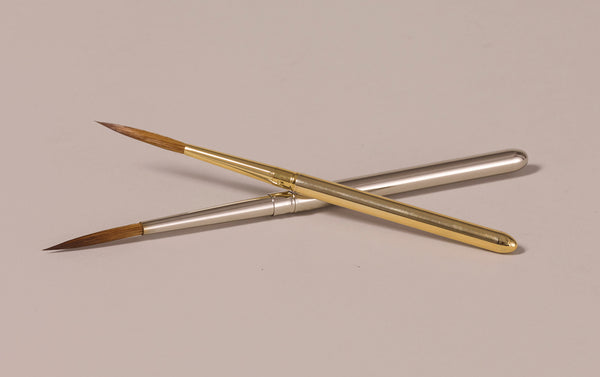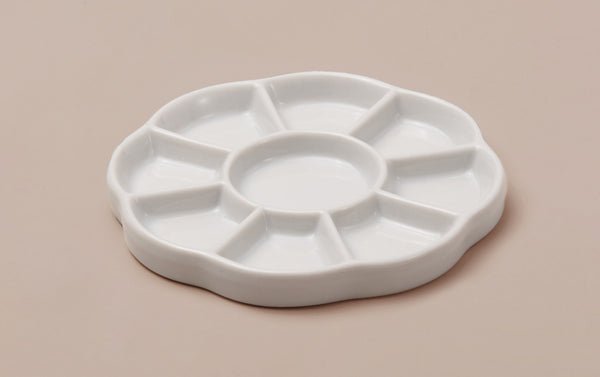Choosing Keeping presents seven exclusive, special editions of 8 shades of Gansai. This Japanese alternative to standard European watercolours is not dissimilar to gouache and is made by a 100 year old paint maker in Japan. The paints can be used directly out of the box with a wet paintbrush - either thinly in translucent washes, or by layering for a bolder effect. These can also be used on darker paper bases to enhance colours further.
Choosing Keeping's own take on this traditional Japanese art material, each set in this retro collection is inspired by colours of a decade past: 20s, 30s, 40s and 50s, each has its own appeal. Put together they are the perfect set for a gift. We recommend the Aquarella (white) and Aquarello (off-white) for the perfect paper pairing.
Included with each set is a blank letterpress swatch card featuring each individual colour name to be painted in for colour referencing. This can come in handy as appearances can be deceiving and each colour is only revealed once wet and set to paper!
Details:
Material: Gansai watercolour
Included: 4 palettes each with 8 colours in chiyogami paper presentation box and 4x blank letterpress swatch cards which can be painted in for colour reference.
Vegetarian/ Vegan: No (contains gelatine glue binder)
Non-toxic
Made in Japan
Colour breakdown:
1920’s set:
63 - Paaru Daidai - Pearlescent orange
75 - Rumi-Roozu - Luminous rose
58 - Seikin - Blue-gold
29 - Koubai - Japanese Apricot - also known as Japanese plum, this colour is named after much beloved subject matter for painting and poetry in East Asia.
61 - Touou - Often translated to gamboge, a pigment made from tapping resin, this Japanese equivalent was once made from yellow grass flowers of the same name and first appears in texts referenced since the Nara period 710 - 794AD
221 - Tokiwa-iro - Evergreen; this colour in traditional Japanese refers to the longevity and unchanging nature of evergreen leaves, seen as good luck in Edo period Japan.
155 - Joushu - Upper vermillion
127 - Aokusa - Grass green
1930’s set:
211 - Aketsuchi - Earthy crimson
42 - Kurocha - Black tea
36 - Kin-oudoiro - Golden ochre
44 - Gunroku - Mixed green - traditionally this pigment is made of a mixture of azurite and malachite.
19 - Kawagane - Iron skin; when a Japanese sword is made the more flexible interior metal, shingane, is coated in far stronger metal coating - kawagane.
38 - Kodai-murasaki - Ancient purple - due to the cost of the pigment, purple was traditionally associated with wealth in Japan and ordinary people were not permitted to wear it.
22 - Kogecha - Charred tea
34 - Hadairo - flesh
1940’s set:
213 - Komugi-iro - Wheat
220 - Ruri-iro - Lapis lazuli blue
54 - Aaraishu - Washed vermillon
139 - Honai - True indigo
9 - Youkou - Carmine
35 - Seidou - This deep green usually translates to mean ‘bronze’ but also shares its name with ‘shrine’; picture the aged bronze statues of a Japanese temple.
41 - Botan - Peony
51 - Komidori - Deep green
1950’s set:
32 - Kikusa - This literally translates to ‘yellow grass’ despite being very much green.
37 - Senkouhi - Fresh bright crimson
205 - Tanryoku - Light green
222 - Aoi-iro - Named after the light purple mallow flower, traditionally used in Japanese medicines.
203 - Kurogin-iro - Black-silver
207 - Sakura-iro - Cherry blossom - named after the much beloved sakura season in Japan.
224 - Jinkou-cha - Argarwood tea, named after the specialised wood that is commonly used in perfumes and incense.
7 - Gunjou - Ultramarine - in the west this colour, meaning across the sea, refers to the rare lapis that was used to make the pigment. Whilst commonly translated to this colour, Gunjou refers to the pigment made from crushed azurite, not lapis.
Swatches and illustrations courtesy of Maria Ines Gul









